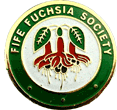

| Home |
| About Us |
| Growing |
| News |
| Shows |
| Varieties |
| Contacts |
| Links |
History of Magellanica Riccartonii
Probably the best known of all the hardy Fuchsias. The name may sound of Spanish origin but originated from the garden at Riccarton,the seat of Sir William Gibson Bart, Near Edinburgh. It has no connection with Riccarton in Kilmarnock as was once supposed. It was raised by James Young, a well known plants man between 1830 and 1835 and is said to have been from seed of Globsa. The flowers are single ,tube and sepals scarlet, with dark purple corolla. The very long narrow sepals are recurved and held well below the horizontal; prolific with bloom, long, with bronze to reddish cast on the foliage. This charming and deservedly popular deciduous shrub, the hardiest of all its tribe, was often regarded as a hybrid but is now widely accepted as a variant of F. Magellanica which was introduced from South America by Lamark in 1788. This species grows wild in its natural habitat near the Straits of Magellanica and along the west coasts as far as Peru. Though it's hardy enough to grow in any garden in Britain, the fuchsia from Riccarton does best where rainfall, humidity and temperature are similar to those its parents enjoys. So it flourishes in the West country and in Southern Ireland where it is pressed into service for thicket hedges up to 8ft high. These are a sight to behold when in flower in the summer and early autumn. Elsewhere it is liable to die back in winter, its shoots dying back almost to ground level . Cold drying winds do more damage than merely low temperatures, so this shrub behaves very differently in eastern counties. However it seldom expires altogether and in spring, fresh young shoots appear from the base. these grow 4 or 5 ft tall and bear the familiar turkey-red and purple blooms, so aptly named lady's eardrops, and in the east they come rather later than in Cornwall or Kerry. The radically symmetrical hermaphrodite flowers are borne singly in the axils of the lance shaped leaves and nod on slender pendulous reddish stalks. They are frequently visited by bees for their nectar. In favourable conditions they may be followed by black berries that are edible although not remarkable for flavour. This cultivar received the RHS Award of Merit for hardiness in 1966, was resubmitted again by L R Russell LTD. for the 1975-78 Wisley trials and received the RHS First Class Certificate. This fuchsia is accepted by the British Fuchsia Society as a show bench hardy.
Young--British--1830